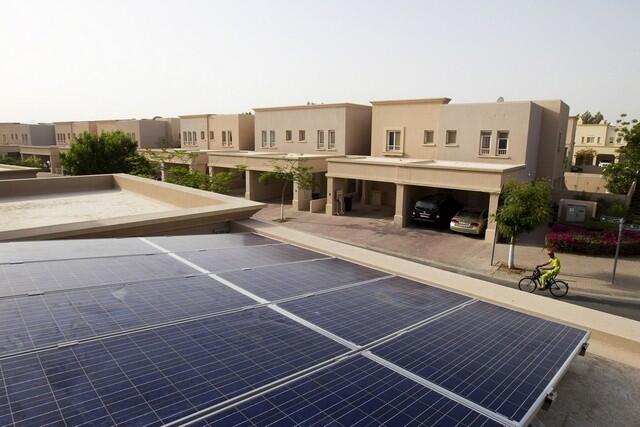Hundreds of thousands of homes in the UAE could be powered by renewable energy over the next five years as the country steers away from power plants primarily driven by natural gas, according to the International Energy Agency (IEA).
The IEA on Tuesday released its medium-term report on renewable energy. The agency is forecasting that, by 2021, the use of renewables in the Middle East and North Africa will grow by 78 per cent, led by the UAE, Egypt and Morocco.
The UAE is expected to add 1.9 gigawatts (GW) – mostly through solar photovoltaic – bringing the country’s capacity to more than 2GW. However, the IEA said that the figure could reach 5GW, more than twice the current target, by 2021 if electricity subsidies for small consumers were removed. This is enough power for more than 800,000 homes, according to calculations from the US-based Solar Energy Industries Association.
Even so, Moritz Borgmann, a partner at the Berlin advisory Apricum, says the IEA is underestimating the pace of the UAE’s renewables growth.
“The IEA is notorious for operating on hopelessly outdated cost assumptions and for lowballing renewable deployment,” Mr Borgmann said. “Beyond 2021, the low cost of renewables will lead the UAE to further increase its already ambitious targets.”
Mr Borgmann said Apricum expects that by 2021 the UAE will have 2.8GW of renewables installed, if not more.
So far the effect of low oil prices has had little effect on long-term plans for renewable energy in the UAE, even though many believed that the appetite for renewables would wane. Last November, Dubai extended its clean energy targets to reach 75 per cent of its energy mix by 2050.
“These developments suggest that decreasing the reliance on imported fuels for power generation and hedging against fuel price volatility are likely to have more of an impact on renewable deployment over the medium term rather than lower fossil fuel prices,” the IEA said.
The UAE has been an importer of natural gas since 2007, despite having the fifth-largest reserves in the world. While local gas reserves meet half of the demand, a large portion is used to reinject into oilfields to maximise output. This month, the UAE and Qatar signed a deal to secure more natural gas.
Currently, natural gas is used to meet more than 90 per cent of the UAE’s power needs. As the country grows, so does its power demand – more than doubling to 52 gigawatts by 2030 from levels in 2010, according to the UAE State of Energy Report.
Apricum said on Monday that it had opened operations in the UAE as demand increases for financial and commercial advisory services in the renewables sector.
Source: The National











